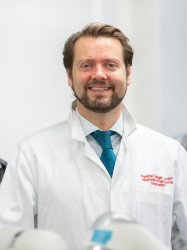BibTex format
@inproceedings{Darwood:2019:10.29007/wkh3,
author = {Darwood, A and Hurst, S and Villatte, G and Fenton, R and Tatti, F and El-Daou, H and Reilly, P and Emery, R and Rodriguez, Y Baena F},
doi = {10.29007/wkh3},
pages = {110--114},
publisher = {EasyChair},
title = {Towards a commercial system for intraoperative manufacture of patient-specific guides for shoulder arthroplasty},
url = {http://dx.doi.org/10.29007/wkh3},
year = {2019}
}

